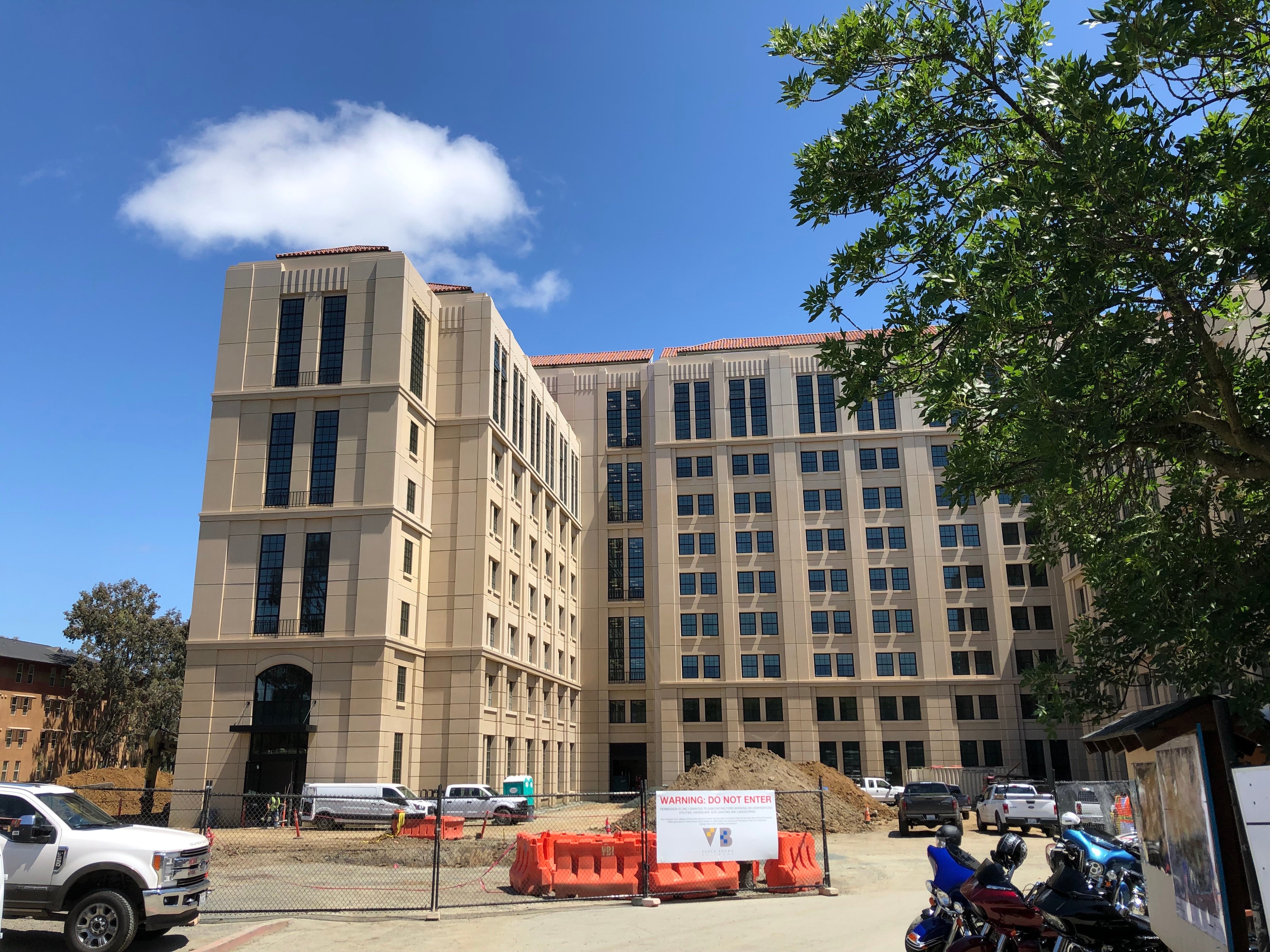Looking east down Serra Mall, the most prominent edifice is a cluster of large apartment blocks assembled at the edge of campus. The four 10-story buildings form the Escondido Village (EV) graduate housing project, which in fall 2020 will house 2,431 additional students –– increasing graduate student housing by 20 percent and bringing off-campus students onto East Campus.
The EV project aims “to serve an existing shortfall in graduate student housing on the Stanford campus,” according to a Stanford University report filed with the Santa Clara Department of Planning and Development. “The project will serve as a positive example of housing leadership in the Bay Area by contributing to affordable housing stock in region, and the project will facilitate bicycling or walking to class instead of driving.”
The project has made significant progress in the past year. Workers assembled the four 10-story towers with prefabricated exterior wall elements and windows attached to the fully completed structural skeleton. After two years of construction, the structures are almost complete.
Vance Brown, Inc., the project’s contractor, is now preparing to enter a new cycle of work during the summer: adding utilities and landscaping the 17-acre site.
According to the project’s website, the next phase of construction will generate increased work across the project site.
“Upcoming activities include: installation of underground utilities, grading, landscape, irrigation, hardscape and site lighting,” the website reads.
As part of the summer construction, the parking lot at the Quillen Highrise, another building in the Escondido Village graduate student housing complex, will be temporarily closed starting June 24. In a construction advisory sent to students, the EV project team also predicted bike and pedestrian detours, potential noise and dust. The Quillen parking lot will reopen in 2020, coinciding with the project’s expected completion.
Spanning 1.6 to 1.8 million square feet of space, the EV project will reduce pressure on off-campus rentals in areas surrounding campus, such as Menlo Park, East Palo Alto and Mountain View.
Shirley Everett, senior associate vice provost for Residential & Dining Enterprises (R&DE), said the new residences will benefit the experience of thousands of graduate students.
“Our goal is to make sure we provide an attractive and vibrant housing complex that will encourage community interaction and contribute to the quality of life of our students,” Everett told Stanford News after the housing plans were approved in early 2017.
Each residential floor will feature a “wellness room,” a laundry room, a kitchenette, a TV lounge, meeting spaces and trash disposal rooms. There will be game rooms, music practice rooms, a United States Postal Service mailroom, all-gender restrooms and a two-story lounge in each building.
The development will also include communal spaces like a pub, a dance studio, a yoga studio and a market, as well as accommodations for parents such as playrooms and lactation rooms.
Stanford R&DE’s current management of graduate housing has come under fire this year after the Daily’s revelation of a six-month long rat infestation in Building 70 and ongoing concerns over food security and accessibility to dining halls.
Graduate Student Council Co-chair and aeronautics and astronautics Ph.D. candidate Yiqing Ding said he hopes the new residences will help make the housing search easier for graduate students.
“I hope this construction project can alleviate the pressing housing shortage issues on campus,” Ding said.
This article has been corrected to reflect that Yiqing Ding is a Ph.D. student, not a postdoctoral student. The Daily regrets this error.
Contact Cooper Veit at cveit ‘at’ stanford.edu.
